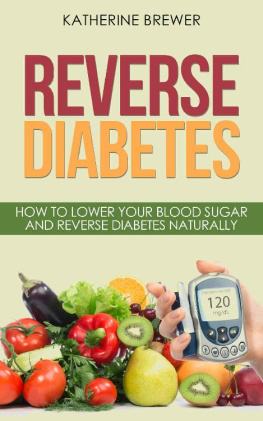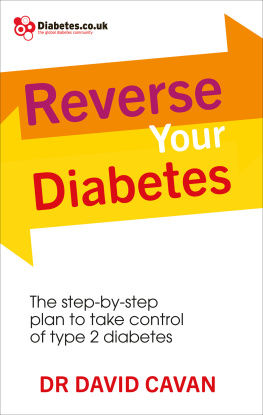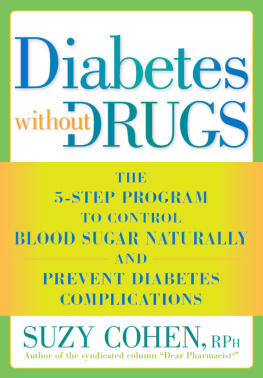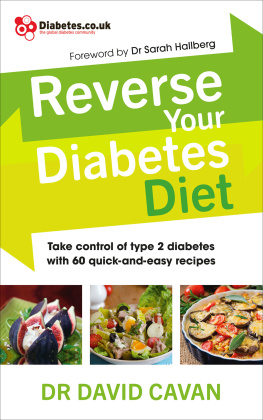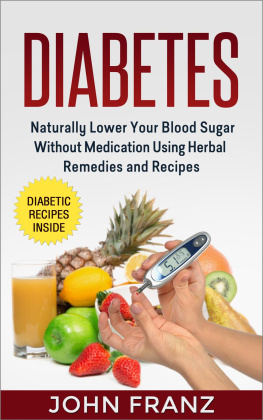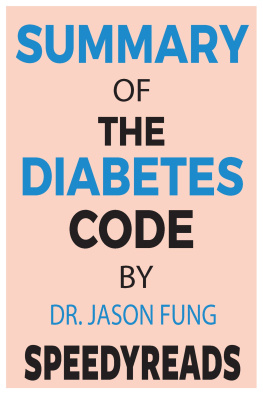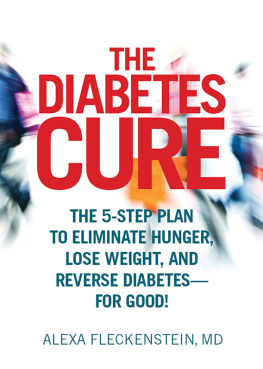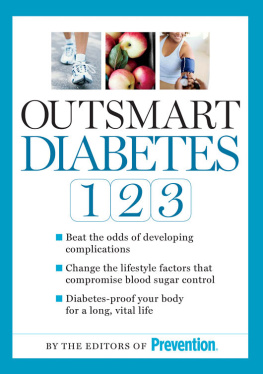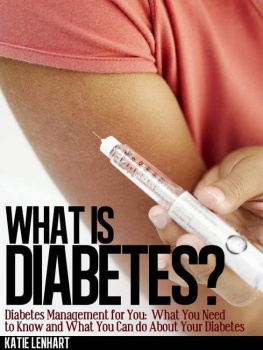Reverse Diabetes
How to Lower Your Blood Sugar and Reverse Diabetes Naturally
Katherine Brewer
Text Copyright 2018 by Katherine Brewer - All rights reserved.
This document is geared towards providing exact and reliable information in regards to the topic and issue covered. The publication is sold with the idea that the publisher is not required to render accounting, officially permitted, or otherwise, qualified services. If advice is necessary, legal or professional, a practiced individual in the profession should be ordered.
From a Declaration of Principles which was accepted and approved equally by a Committee of the American Bar Association and a Committee of Publishers and Associations.
In no way is it legal to reproduce, duplicate, or transmit any part of this document in either electronic means or in printed format. Recording of this publication is strictly prohibited and any storage of this document is not allowed unless with written permission from the publisher. All rights reserved.
The information provided herein is stated to be truthful and consistent, in that any liability, in terms of inattention or otherwise, by any usage or abuse of any policies, processes, or directions contained within is the solitary and utter responsibility of the recipient reader. Under no circumstances will any legal responsibility or blame be held against the publisher for any reparation, damages, or monetary loss due to the information herein, either directly or indirectly.
Respective authors own all copyrights not held by the publisher.
The information herein is offered for informational purposes solely, and is universal as so. The presentation of the information is without contract or any type of guarantee assurance.
The trademarks that are used are without any consent, and the publication of the trademark is without permission or backing by the trademark owner. All trademarks and brands within this book are for clarifying purposes only and are owned by the owners themselves, not affiliated with this document.
Table of Contents
Introduction
Diabetes can affect anyone from any walk of life. Statistics shows that more than 400 million people world over suffer from diabetes. Diabetes increases the risks of kidney disease, cardiovascular diseases, blindness, and other debilitating complications. Research by the Centre for Diseases Control (CDC) estimates that it costs the American public about $245 billion every year.
Unfortunately, a medical cure is not currently available for diabetes. Injecting insulin or taking oral diabetic medications are effective in controlling blood sugar levels and slowing the development of complications, but not enough to cure the disease.
Yes, diabetes is a chronic disease, but that doesnt mean that you should put your hands in the air and let it defeat you. Many people have lived with diabetes for a long and productive life. Some even have cured the disease. What are their secrets? An important takeaway from their success stories is that healthy lifestyles matter when dealing with diabetes. Eating healthy food, exercising regularly, and losing weight are all critical for blood sugar improvement. Through due diligence with healthy habits and medication, you can control and even reverse diabetes.
This book will provide you with the best ideas to deal with diabetes on a day-to-day basis. The 15 habit-developing strategies in this book will enable you to adopt a healthier lifestyle, quit bad habits, and avoid diabetes complications. These tips are not a set of rigid rules, but rather, think of them as sensible and natural ways to lower blood glucose levels. These habits will help you take back control of your health and life, and win the battle against diabetes.
Introduction to Diabetes
The majority of diabetics find out that they have the disease accidentally on a medical checkup, some of them, unfortunately, too late. This tells us that people take poor care of themselves. The management of diabetes cannot be solely the responsibility of doctors. The first step to managing blood sugar and improve your condition is to educate yourself.
What Is Diabetes?
Diabetes is a common and prevalent disease that occurs when the blood glucose levels in your blood get too high. In general, blood glucose comes from the food you eat and is the main source of energy for your body to perform routine and necessary tasks. Most of the food that you eat is broken down into glucose by the body and this glucose is sent through your blood to every part of your body for energy.
Many hormones play an important role in converting the food you eat into glucose. One such hormone is called insulin and this is made by the organ called pancreas. The insulin hormone is responsible for taking the glucose from your blood stream and delivering them to each individual cell.
Diabetics either do not produce enough insulin due to a malfunctioning pancreas, or their body's cells do not adequately respond to the insulin circulating through their bloodstream. As a result, the person's blood is flooded with glucose.
Symptoms of Diabetes
The symptoms of diabetes include the following:
Increased thirst
Frequent urination
Fatigue because the glucose never reaches the cells to give you energy
Blurred vision
Hunger pangs
A tingling feeling in your hands and feet
Soreness and wounds that don't heal fast
Unexplained weight loss
There are three types of diabetes.
Type 1 Diabetes
Type 1 (juvenile) diabetes is not as common as type 2 diabetes and typically affects children under the age of fourteen. Although adults can become afflicted with this type of diabetes, it is considered very rare in those 35 years of age or older. Type 1 diabetes occurs when the pancreas produces little or no insulin. This usually occurs when the immune system attacks the cells in the pancreas that are responsible for making insulin. Although this type of diabetes is almost impossible to reverse naturally and requires medications, this book will help people with type 1 diabetes improve their general health.
Type 2 Diabetes
Type 2 (adult onset) diabetes accounts for 90 percent of all cases and typically strikes after age 45. With this type of the disorder, the body's cells do not properly respond to the insulin that is present in the bloodstream, resulting in high glucose levels despite the fact that adequate insulin is being produced. Although type 2 diabetes is typically diagnosed after age 45, an increasing number of individuals under the age of 30 are being diagnosed with the disorder each year. Some of the known factors that can lead to diabetes are:
Lifestyle
Overweight and physical inactivity are two of the major causes of type 2 diabetes. When you carry a lot of body weight, it impacts the production of insulin and the amount that is available may not be enough to pass the glucose to every cell in your body. This leads to accumulation of glucose in the blood, thereby leading to diabetes.
Resistance to insulin
In some people, for unknown reasons, the muscle, liver, and fat cells do not use insulin well. This means, the pancreas is forced to produce more insulin as whatever it is producing currently may not be enough. Although the pancreas adapts to producing more, the inefficient usage of insulin by the other organs, makes it difficult to bridge the gap.
Genetic factors
Some races are more prone to diabetes due to genetic factors and the food that they have been eating for generations. For example, South-east Asians who thrive on carbohydrate rich rice as their staple are more predisposed to diabetes.
Family history

